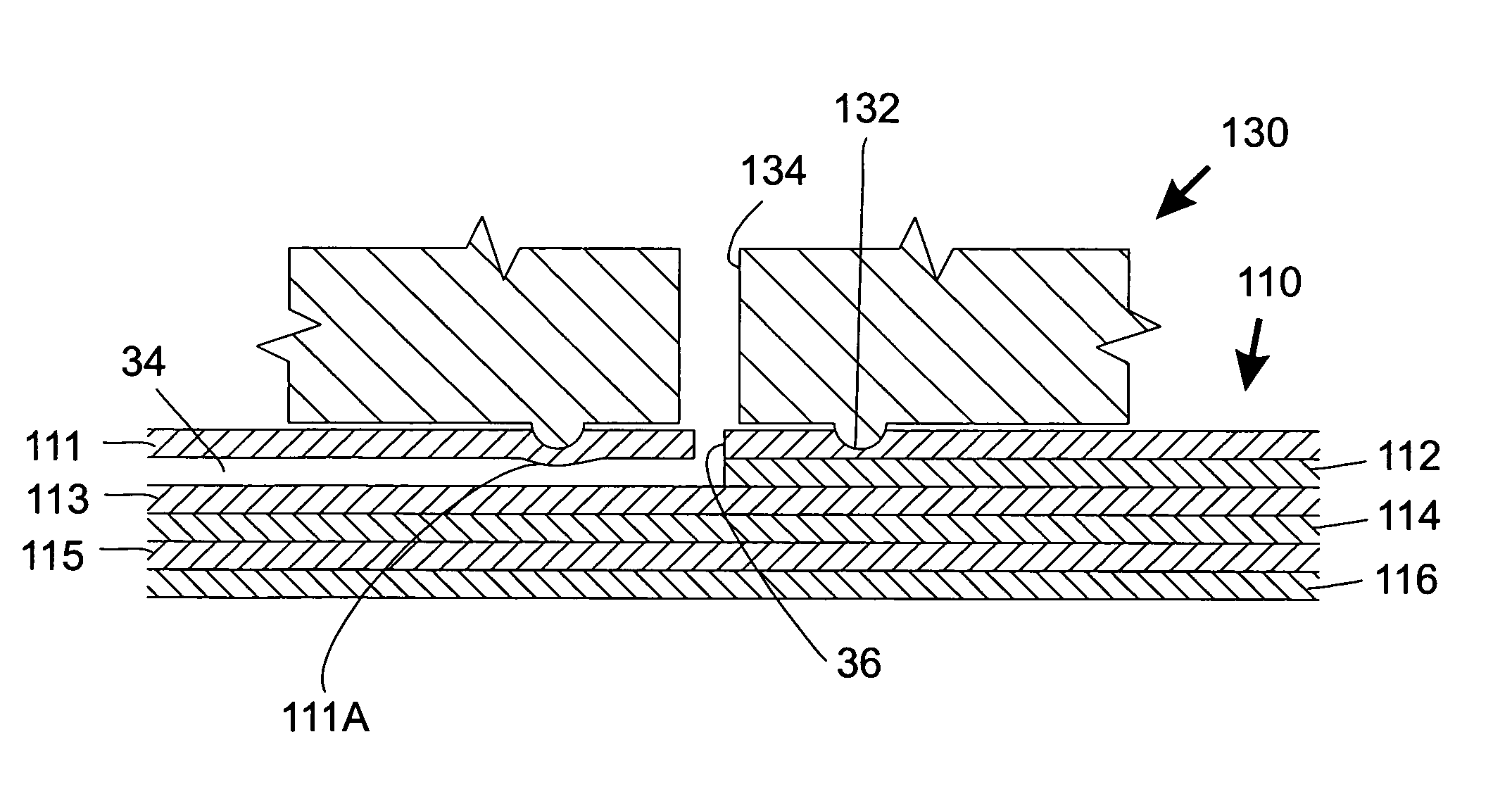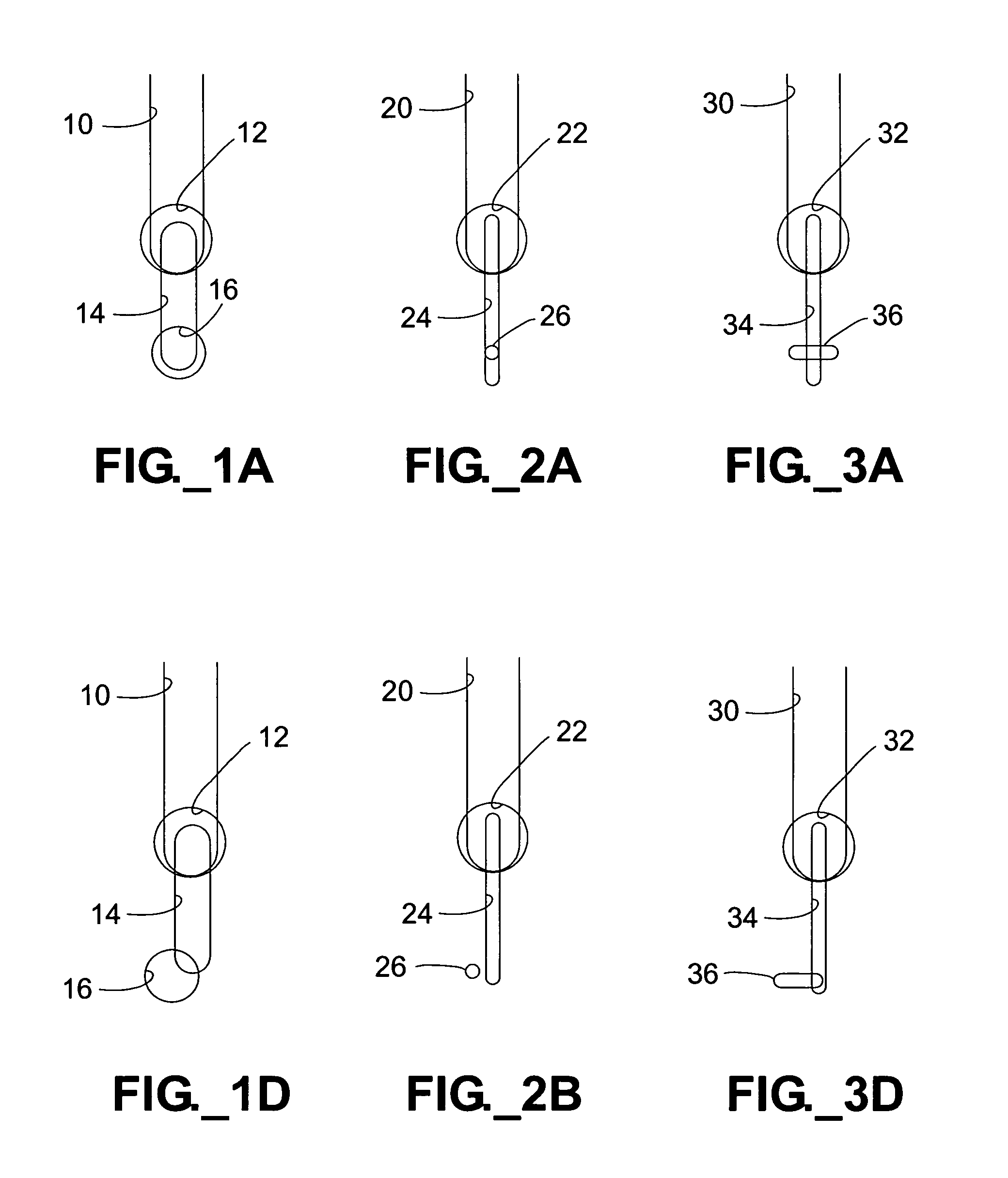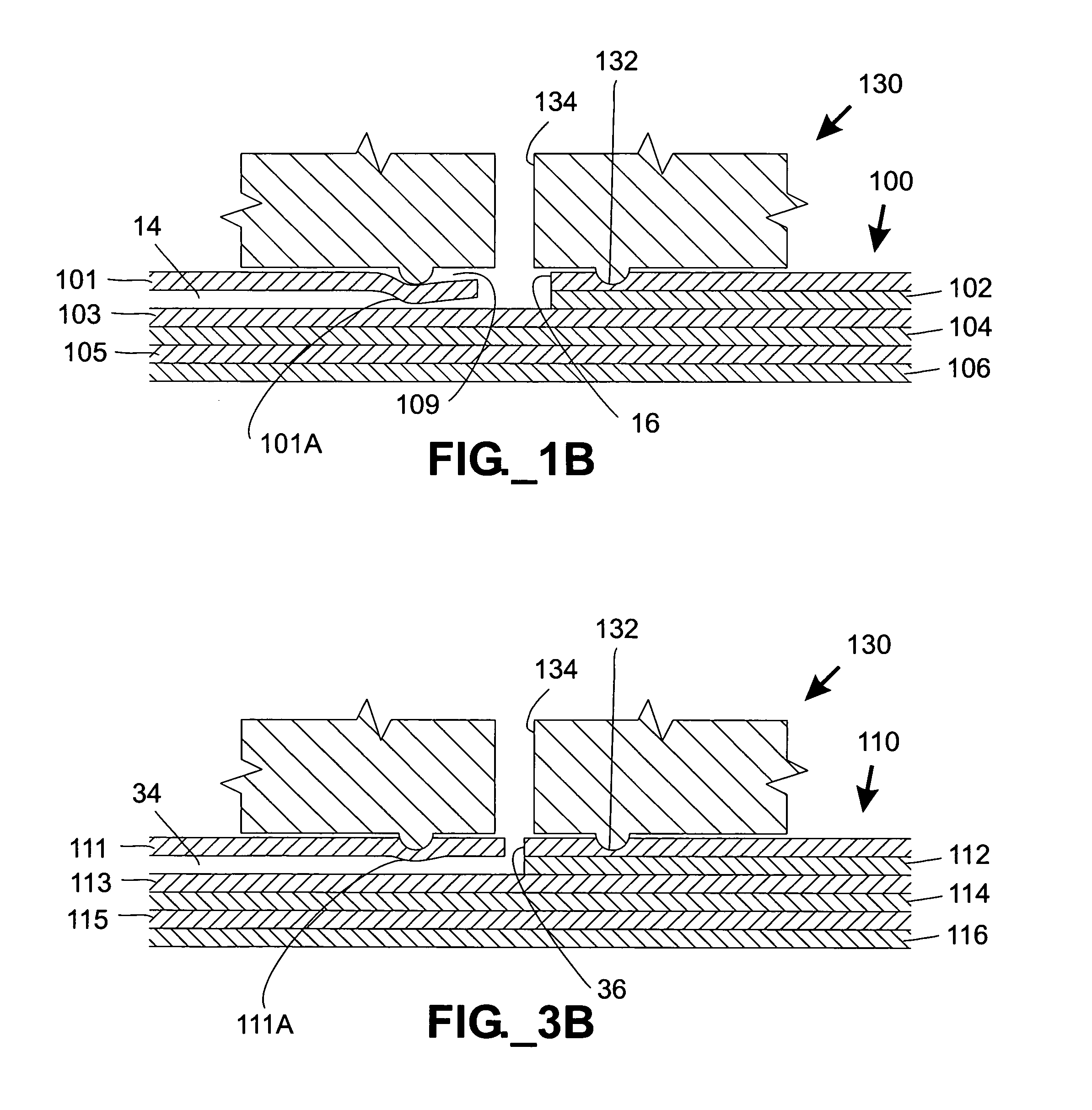Sealing interface for microfluidic device
a technology of microfluidic devices and interfaces, which is applied in the field of microfluidic systems, can solve the problems of inability to perform multiple parallel separations, inability to rapidly operate, and inability to meet the needs of high-throughput (i.e., parallel) separation systems
- Summary
- Abstract
- Description
- Claims
- Application Information
AI Technical Summary
Benefits of technology
Problems solved by technology
Method used
Image
Examples
Embodiment Construction
Definitions
[0030]The term “collapse” as used herein refers to a substantially complete closure or blockage of a fluidic channel, such as may be caused by compressing the upper and lower boundaries of a channel together.
[0031]The terms “column” or “separation column” as used herein are used interchangeably and refer to a region of a fluidic device that contains stationary phase material and is adapted to perform a separation process.
[0032]The term “depth” as used herein with regard to a microfluidic channel structure refers to the distance between the outer surface of a microfluidic device and the parallel channel surface nearest to the outer surface. For example, if depth of a channel is measured relative to an upper surface of a microfluidic device, the depth is equal to the distance between the upper boundary of the channel and the upper (outer) surface of the device.
[0033]The term “elastomer” as used herein refers to a polymeric material that is crosslinked to form a network stru...
PUM
| Property | Measurement | Unit |
|---|---|---|
| contact pressure | aaaaa | aaaaa |
| pressure | aaaaa | aaaaa |
| pressure | aaaaa | aaaaa |
Abstract
Description
Claims
Application Information
 Login to View More
Login to View More - R&D
- Intellectual Property
- Life Sciences
- Materials
- Tech Scout
- Unparalleled Data Quality
- Higher Quality Content
- 60% Fewer Hallucinations
Browse by: Latest US Patents, China's latest patents, Technical Efficacy Thesaurus, Application Domain, Technology Topic, Popular Technical Reports.
© 2025 PatSnap. All rights reserved.Legal|Privacy policy|Modern Slavery Act Transparency Statement|Sitemap|About US| Contact US: help@patsnap.com



